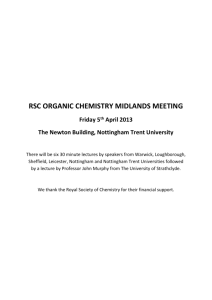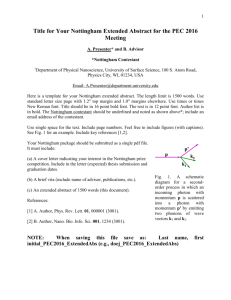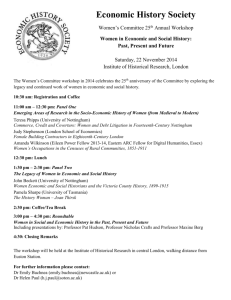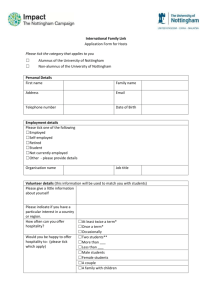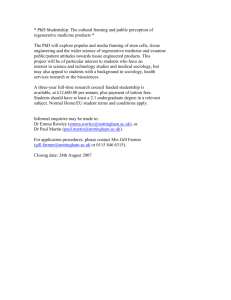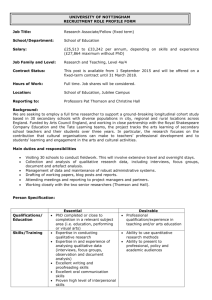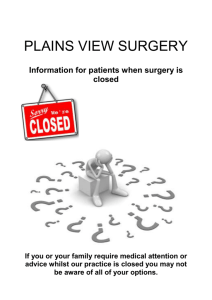On Ye
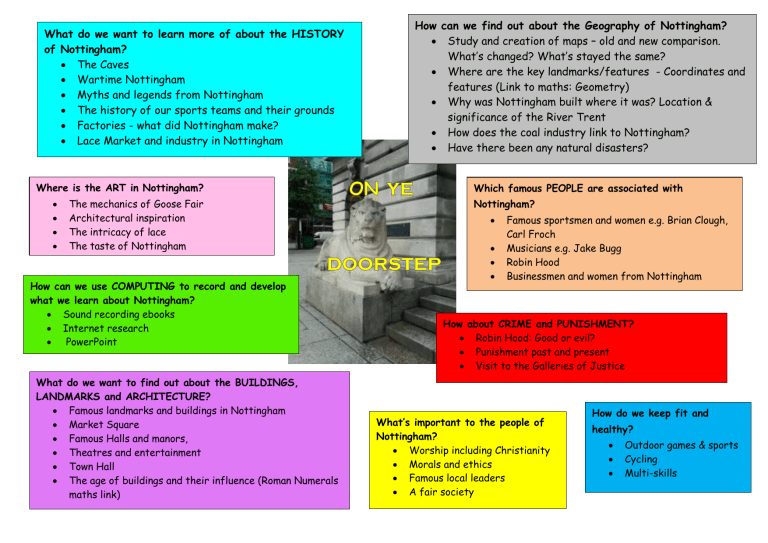
What do we want to learn more of about the HISTORY of Nottingham?
The Caves
Wartime Nottingham
Myths and legends from Nottingham
The history of our sports teams and their grounds
Factories - what did Nottingham make?
Lace Market and industry in Nottingham
The mechanics of Goose Fair
Architectural inspiration
The intricacy of lace
The taste of Nottingham
How can we use COMPUTING to record and develop what we learn about Nottingham?
Sound recording ebooks
Internet research
PowerPoint
What do we want to find out about the BUILDINGS,
LANDMARKS and ARCHITECTURE?
Famous landmarks and buildings in Nottingham
Market Square
Famous Halls and manors,
Theatres and entertainment
Town Hall
The age of buildings and their influence (Roman Numerals maths link)
Where is the ART in Nottingham?
How can we find out about the Geography of Nottingham?
Study and creation of maps – old and new comparison.
What’s changed? What’s stayed the same?
Where are the key landmarks/features - Coordinates and features (Link to maths: Geometry)
Why was Nottingham built where it was? Location & significance of the River Trent
How does the coal industry link to Nottingham?
Have there been any natural disasters?
Which famous PEOPLE are associated with
Nottingham?
Famous sportsmen and women e.g. Brian Clough,
Carl Froch
Musicians e.g. Jake Bugg
Robin Hood
Businessmen and women from Nottingham
How about CRIME and PUNISHMENT?
Robin Hood: Good or evil?
Punishment past and present
Visit to the Galleries of Justice
What’s important to the people of
Nottingham?
Worship including Christianity
Morals and ethics
Famous local leaders
A fair society
How do we keep fit and healthy?
Outdoor games & sports
Cycling
Multi-skills
Literacy
Main Units:
Narrative – story
To incorporate:
Reading of myths and legends
Descriptive writing – settings & character
Writer’s tool kits
Structure and organisation
Direct speech
Sophisticated punctuation
Powerful verbs/adverbs
Writing and editing
Recount: Newspaper reports
To incorporate:
Reading of newspapers
Features and articles
Structure and organisation
Direct speech/reported speech
Sophisticated punctuation
Writing and publishing
Additional application within topic context:
Persuasive language
Comparison writing (non-fiction)
Kenning poetry
Information writing
SUMMER
TERM
2015
Science
Evolution and Inheritance:
Fossils and change over time
Adaptation; Skeleton changes over time
Offspring and parental characteristics
Animals, including humans:
Development and puberty
Maths
Number and Place Value:
Problem solving and practical application
Negative numbers in context
Number – Addition, Subtraction, Multiplication & Division:
Using efficient methods in all four rules to calculate and solve related problems
Use of rounding and estimation to support calculation
Prime & composite numbers; square & cubed numbers
Mental agility and fluency
Number – Fractions, decimals and percentages
Addition, subtraction & simple multiplication (whole number by fraction)
Proper & improper fractions, equivalence & relationships (FDP)
Decimal notation
Problem solving in context
Measurement:
Time and problem solving
Volume and capacity
Metric conversions and problem solving
Geometry:
Drawing, measuring & calculating angles
Statistics:
Collection, interpretation and presenting of data

